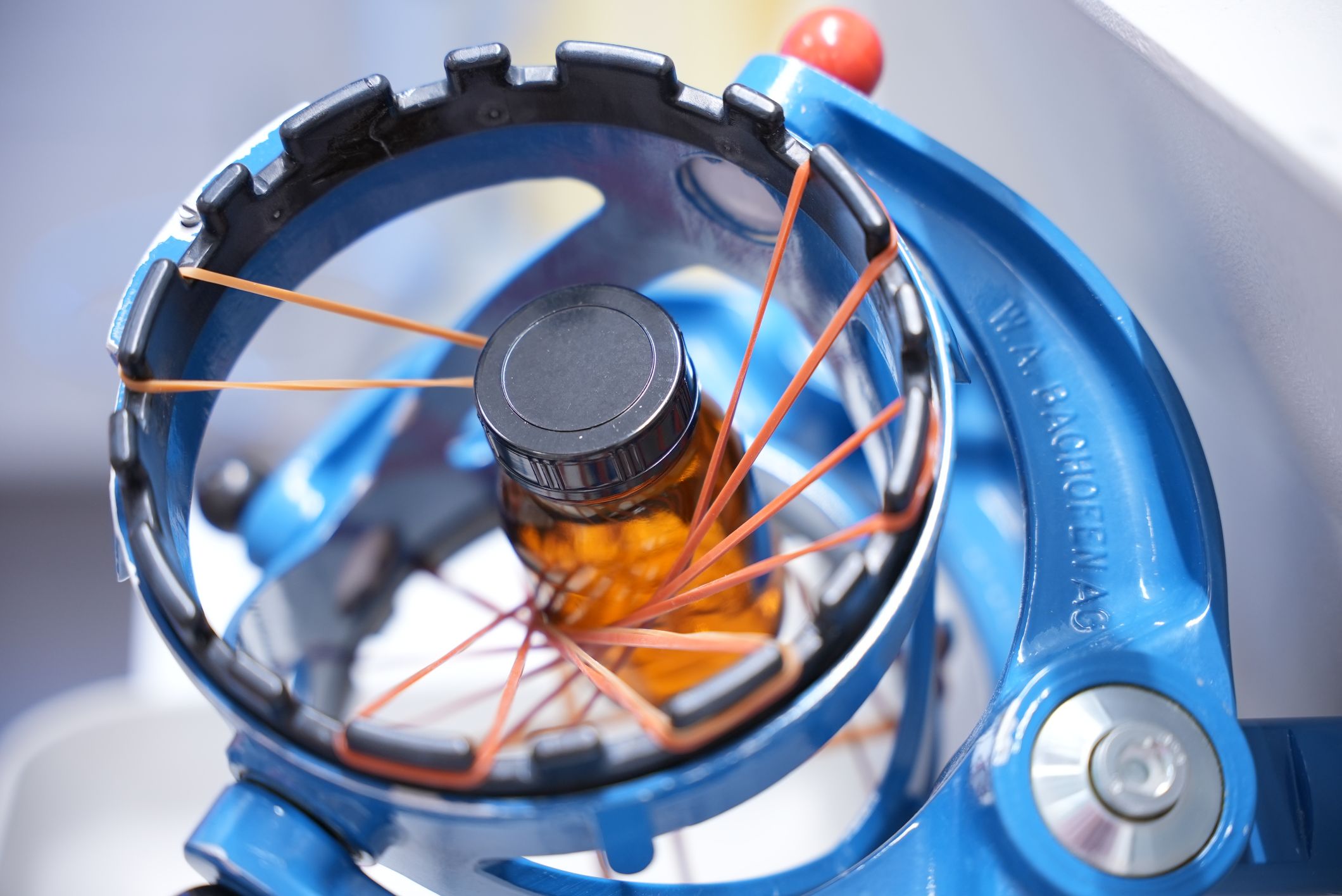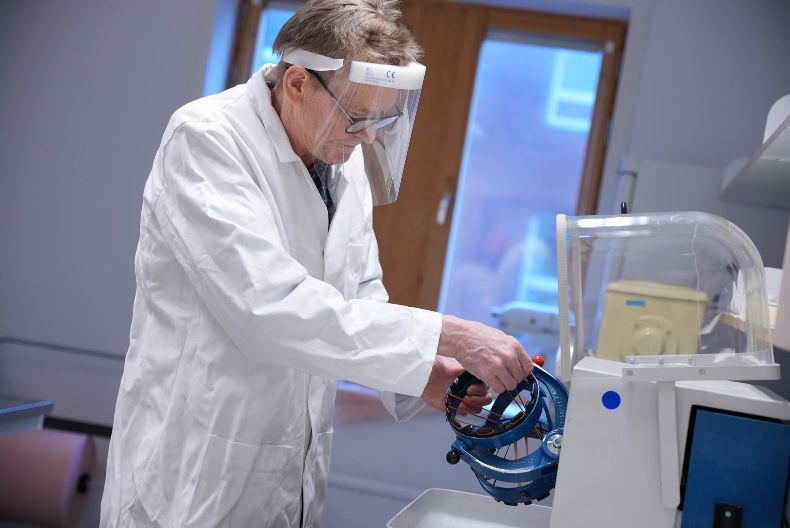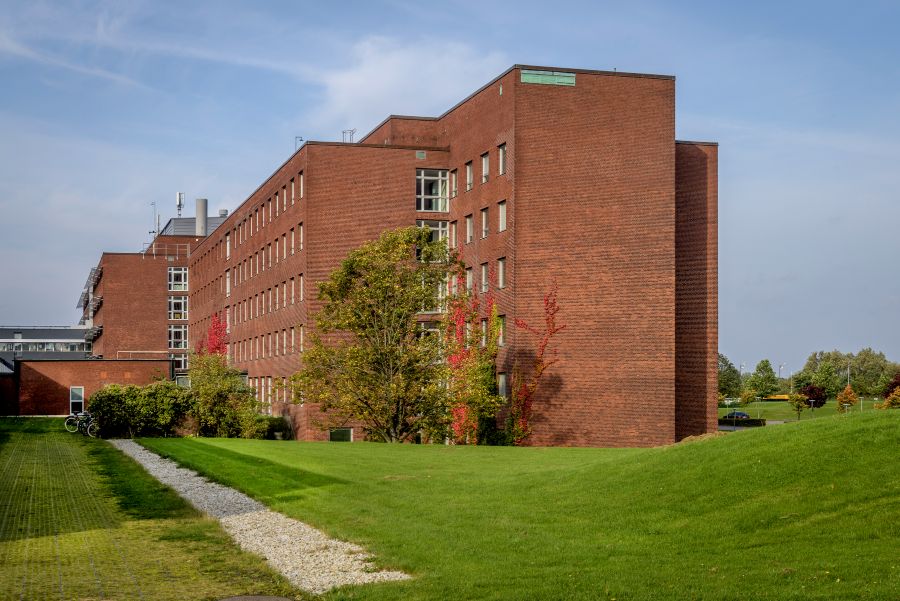LTH takes a leading position in inhalation drug research
Drugs that go directly to the lungs and are used to treat respiratory diseases have been a Swedish success story. The hope is that even more research findings and innovations can follow. Since research on inhalation technology was embarked upon at LTH, industry has had access to more engineers with vital competencies in such technology for medicines that are inhaled.
– Published 5 March 2022

Inhalation technology has long been a parade branch of the Swedish pharmaceutical industry. But even though a considerable amount of research has been conducted in the field, much remains to be done to fully understand this complex area. Now, LTH and the Department of Food Technology, Engineering and Nutrition – with the help of the new Adjunct Professor in inhalation technology – want to delve deeper into research and strengthen the link between industry and academia.
Dr. Kyrre Thalberg, a chemical engineer from LTH with a PhD in physical chemistry and 30 years of experience in research and development in inhalation technology, is cutout for the task.
The foundation was laid at Draco in Lund
The foundation of Sweden’s strong position in inhalation technology was laid in the 1970s and 80s at Draco in Lund, which was part of the Astra Concern. The success story really took off with the launch of TurbuhalerÒ, a powder inhaler for asthmatics. Inhalation technology still plays a significant role for both Astra Zeneca and Sweden, and today there are about twenty companies in Skåne with specialist expertise in inhalation.
In a number of diseases, there are great gains to be made by delivering drugs directly to the lungs. This applies, in particular, to lung diseases such as asthma and COPD (chronic obstructive pulmonary disease). A rapid, systemic uptake in the body can also be used to deliver peptides, vaccines, and protein via the lungs. Insulin is a small protein and an example of a drug that, thanks to innovated technology, can be inhaled.
Small and demanding particles
However, the inhalation technique is extremely challenging, as the aerosol particles that a patient is to inhale need to be between one and five micrometers in diameter – that is, 0.001 to 0.005 millimeters in diameter – if they are to be able to reach the lungs.
When particles are so small that they are hardly affected by gravity, they are quite difficult to handle and need to be formulated in tricky ways. In addition, you need to have an inhaler that delivers a dose that is exactly right, and that is easy for the patient to use.
Moving forward – for the benefit of the patient
Marie Wahlgren, Professor of Pharmaceutical Technology at LTH, together with Dr. Kyrre Thalberg, point out three areas that are particularly important for developing research on inhalation technology at LTH:
Increased co-operation between the University and companies in the industry. The medical research on respiratory diseases has been conducted in close collaboration between the companies and university hospitals. But as far as the technical part is concerned, research and development has so far been held within the companies. Overall, collaborations on inhalation technology have been quite limited, so here is an opportunity for synergies when the cutting-edge expertise in companies is matched with academic excellence.
Engage students in order to secure a rising generation in this field. It is important to show the students that Sweden is a world leader in inhalation technology, and that the field provides good opportunities for the future. The signals from the companies in the region are that the demand for competence is great. One hope is that more LTH students in the near future will choose to do their degree projects on this subject in collaboration with industry.
Maintain Sweden’s leading position in inhalation technology through in-depth research. Much of the research and development on inhalation products is still characterised by trial and error. By enriching LTH with the expertise that industry is now able to provide, the Faculty have the opportunity to take the lead in better understanding inhalation formulations, and in being able to predict how much of the drug in an inhalation product can reach the lungs.
Dr. Kyrre Thalberg will work with prediction models, more specifically, specific digital models that can predict how formulation and inhalers interact at different inhalation flows and how much of the drug reaches the lung. If the drug is to reach the lung and benefit the patient, everything must be correct – at all stages.
New touchpoints
In December 2021, there was a kickoff for the new research area. A dozen representatives from inhalation technology companies in the region met with researchers from Lund University (Food Technology, Chemical Engineering, Physical Chemistry and Biochemistry), and researchers from the Research Institute of Sweden (RISE), to establish new contacts between industry and academia and to identify new, conceivable collaborations.
The companies presented goals and visions for the future and showed that inhalation technology is a rapidly evolving area where the need is great for new skills, competence, and innovative thinking.
The engineers are needed in industry
Orest Lastow – founder of Iconovo AB that has grown significantly from its inception in 2013 and now has 32 employees – was among those who presented their companies. During the discussion, he was asked what he wishes for on the part of the academy.
"We need engineers who have expertise in both chemistry and mechanical engineering. Above all, we need those who know mechanical design and flow modelling in combination with physical chemistry, powder technology, and pharmaceuticals.

Adjunct Professor
A grant from the Swedish Foundation for Strategic Research (SSF) has made it possible for LTH to hire an adjunct professor in inhalation technology.
Dr. Kyrre Thalberg has his main employment at Emmace Consulting AB, which specialises in the analysis of inhalation products.

Micrometer
A micrometer (μm) is one thousandth of a millimeter.
